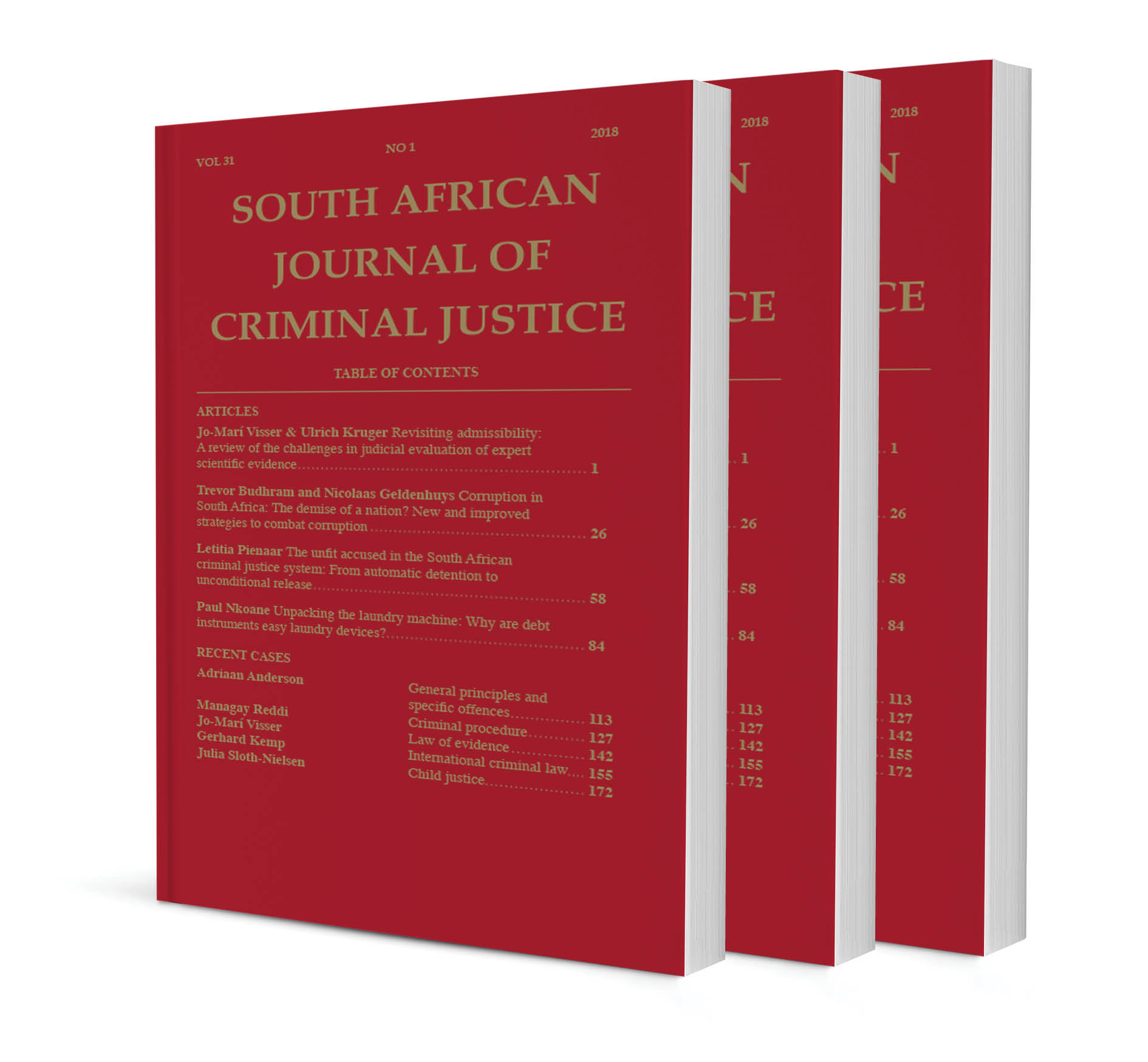The Black Flame (part one): Snyman’s Criminal Law

The Black Flame (part one): Snyman’s Criminal Law
Author: Tshepo Mosaka
ISSN: 1996-2118
Affiliations: LLB (Wits) LLM (UCT) PhD (Nottingham), Lecturer in Law, University of Cape Town
Source: South African Journal of Criminal Justice, Volume 34 Issue 2, p. 214 – 230
https://doi.org/10.47348/SACJ/v34/i2a3
Abstract
The latest edition of Snyman’s Criminal Law has reached the status of scholarly immortality. It has been revised by Hoctor, but Snyman’s name lives on. This is consistent with the argument made in Part one of the review of this book. This is a review conducted through a trilogy of papers, analogous to WEB du Bois’s trilogy of novels entitled the Black Flame. Part one begins by clarifying why this review is conducted in this way. The paper then proceeds to contextualise Snyman’s Criminal Law alongside the two dominant traditions of South African criminal law, following the work of Gardiner and Lansdown and De Wet and Swanepoel. Thirdly, the paper concludes by developing the argument that South African criminal law remains in a perpetual northbound-gaze towards Europe and away from Africa. This theme is developed further in Parts two and three of this review.